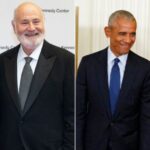
I was recently studying the history of the hymn “O Holy Night” and found an interesting story.
On Dec. 21, 1906, a 33-year-old university professor and former chief chemist for Thomas Edison, Reginald Fessenden, decided to try something that others thought impossible. He used a new type of generator and a microphone and, for the first time in history, broadcast a voice over the airwaves.
What did he read? Was it The Wall Street Journal? No. Instead, this young chemist read the most important thing that he could read to the world. In a clear, strong voice, he read from the book of Luke: “And it came to pass in those days, that there went out a decree from Caesar Augustus that all the world should be taxed.”
Fessenden continued reading the entire Christmas story. “Shocked radio operators on ships and wireless owners at newspapers, used to Morse code heard over tiny speakers, were interrupted by a speaking voice reading Luke and had no idea where it came from. When the professor finished his reading, he picked up his violin and played ‘O Holy Night.’ … Imagine the surprise of listeners everywhere, never suspecting such a thing was possible.”
So the very first song played over the airwaves was “O Holy Night,” and the first extensive transmission over the airwaves was the Christmas story, the true account of God coming to earth to be the Savior of mankind. Fessenden saw the Christmas story as something that the whole world needed to hear, so he projected this signal into space for the world to receive and hear.
It is interesting to note another time the Word of God was projected to the entire world. On Dec. 24, 1968, all three members of the crew of the Apollo 8 mission participated in reading a message that was heard on television sets around the world. It has been estimated that roughly 1 billion people spread across 64 countries heard the message, and an additional 30 countries heard the recorded broadcast.
What was it that was read? It was Genesis 1:1-10 from the King James Bible. Why would they read this? It was an acknowledgment of God Almighty as the Creator of the universe, and this was the eve of the celebration of his coming to earth in the form of the LORD Jesus Christ.
These highly trained men of science were communicating a message that the whole world needed to hear, and it was the Word of God on the eve of Christmas Day.
As insane as it may seem, Madalyn Murray O’Hair, founder (and probably sole member) of American Atheists, responded to this reading by suing the United States government, alleging violation of the First Amendment (showing that she had obviously never read it). Several lower courts dismissed the case, with the decision being appealed until finally the Supreme Court declined to review it.
On July 20, 1969, after the Eagle lunar lander touched down on the surface of the moon, astronaut Edwin “Buzz” Aldrin read John 15:5 silently and then took Communion on the lunar surface. So the first food and liquid consumed on the moon were taken in communion with the LORD Jesus Christ.
Why would Aldrin do this? It is because this is a message that the world needs to hear: We need to be in communion with the LORD Jesus Christ.
NASA had asked Aldrin not to read the Bible out loud because of the previous lawsuit from crazy O’Hair, but on the way back to Earth, Aldrin read Psalm 8:3-4, which says, “When I consider Thy heavens, the work of Thy fingers, the moon and the stars, which Thou hast ordained; What is man, that Thou art mindful of him? and the son of man, that Thou visitest him?”
Why would Aldrin read this? It is because this is the Word of God. It talks about God’s creation, it acknowledges him as the Creator, and it talks about the LORD Jesus Christ coming to earth. This is the message the earth needs to hear.
John Glenn, the first American astronaut to circle Earth, stated, “To look out at this kind of creation and not believe in God is to me impossible.” It is reported that he prayed every day on his spaceflights, and this was a United States Marine Corps aviator, engineer, astronaut and businessman who eventually served in Congress.
Why would this man make such statements? It is because this is the message the world needs to hear. The world needs the Word of God.
Many astronauts have followed the same pattern. James Irwin, after coming back from space, dedicated his life to Christianity and started an evangelistic foundation. Tammy Jernigan talked about her Christian faith in a live broadcast from the shuttle, and Shannon Lucid took a minister’s sermon up to the Russian space station.
Why would these highly trained people do these things? Because they knew that the message the world needs to hear is Christmas, when the Savior of the world was born.
Actually, the first time the message of Christmas was broadcast to our planet was by God’s angels 2,000 years ago, and it is recorded for us in Luke 2:8-14. They summed up the reason for this proclamation in verse 14: “Glory to God in the highest, and on earth peace, good will toward men.”
So here are the angels of God broadcasting to the earth the message that the earth needs to hear, and it is about Christmas, it is about the birth of our Savior, and it is proclaiming that through Christmas we have “on earth peace, good will toward men.”
In our days, amid threats of nuclear war and the total obliteration of the planet, maybe it is time we heed the proclamation given to the earth, and let our response be what is written in the refrain of the hymn “O Holy Night”:
“Fall on your knees, oh hear the angel voices.”
The views expressed in this opinion article are those of their author and are not necessarily either shared or endorsed by the owners of this website. If you are interested in contributing an Op-Ed to The Western Journal, you can learn about our submission guidelines and process here.







